Easter marks the high point of history for the Christian as we celebrate the crucifixion, burial and resurrection of Christ, without doubt establishing his credentials as the Saviour. This year our church, Calvary Baptist Church, performed an Easter Musical entitled “Saviour” on Good Friday Morning which was attended by over one thousand people.
Being devoid of musical talent, my contribution was to photograph the presentation, the results of which are the subject of today’s post.
Event photography always presents challenges, not the least of which are there are no ‘do overs’, you only have one chance to get it right. Secondly, you need to capture the feel of the event, so that the viewer of the images gets a glimpse of what it would have been like to be there, and those who were performing at or attending the event should be able to relive the experience through viewing the photographs. I trust both of those ideals are met with these images.
Event photography presents numerous and significant technical challenges that must be successfully navigated in order to achieve good results. The venues are generally dark, and lighting is typically achieved through multiple point sources (spotlights) that continually move about and change colour as well. We will talk more about dealing with various challenges in a minute using images to provide examples.
Event photography, especially in low light situations, is one of those things that requires a good camera body that functions well at the high ISO’s required to generate shutter speeds fast enough to capture the action without blurring the subjects. The Canon 5D MkIII used for all of today’s images is a terrific high ISO performer and all the images in this post were taken at ISO 4000. I purposely did not perform any noise reduction in the post processing of these images so that you can see how clean the files are right of the camera, even at ISO 4000. Fast glass is also a big help in low light and if you look at the EXIF data you will see many of the images were taken at f/2.8. Four different lenses were used for this photo-shoot; 16-35/2.8L (wide angle zoom), 24-105/4L (short telephoto zoom), 100/2.8L (portraits), and 70-200/2.8L (telephoto zoom).
When covering events, get there early and look for some unique compositions and angles that are all about capturing the feel of the performance.
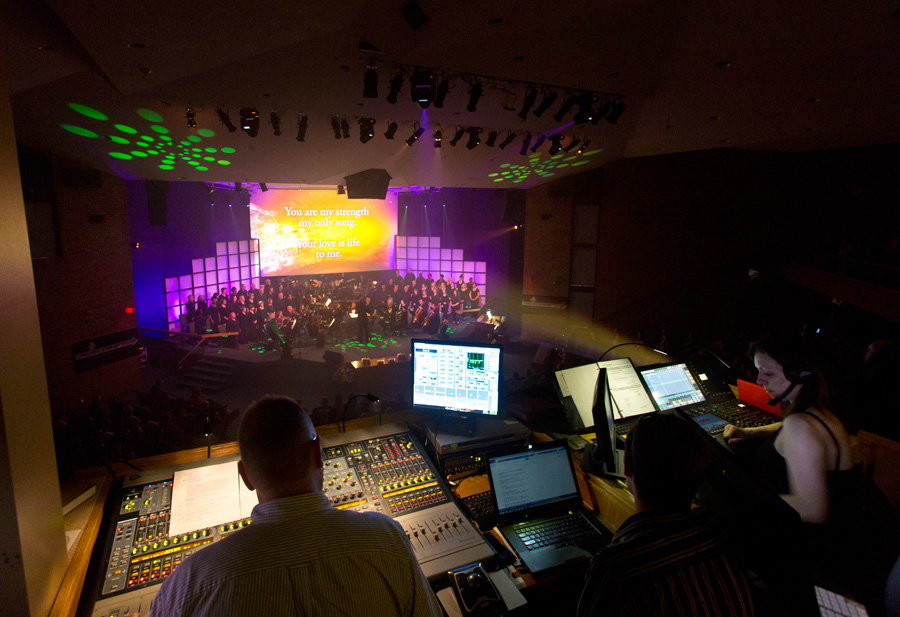
I aways start with the wide angle and get shots that show the performance on a large scale as well as capturing the venue and the audience. Move around the auditorium (if allowed) and get a number of different views.
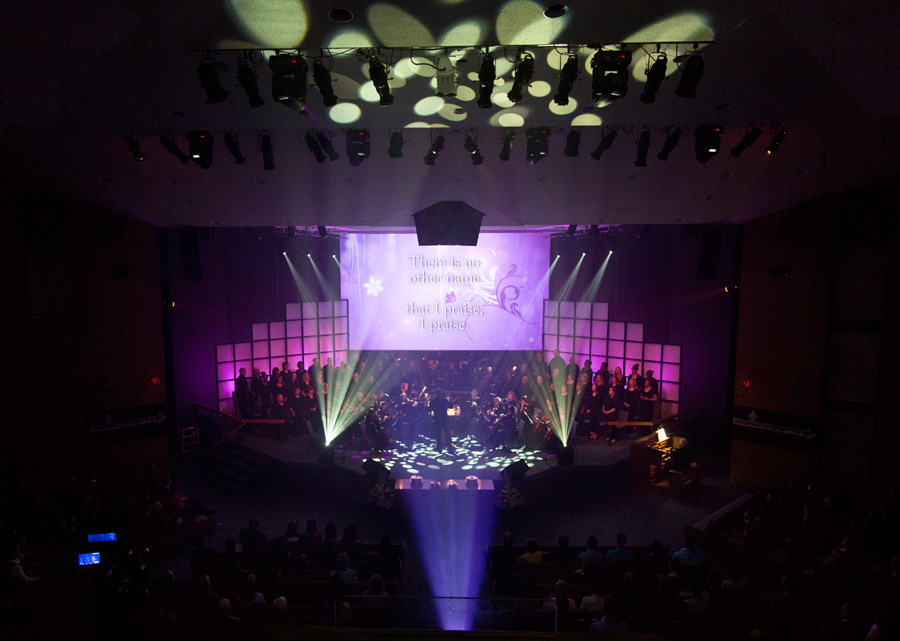
Side views of the auditorium are the best vantage point to highlight the audience.
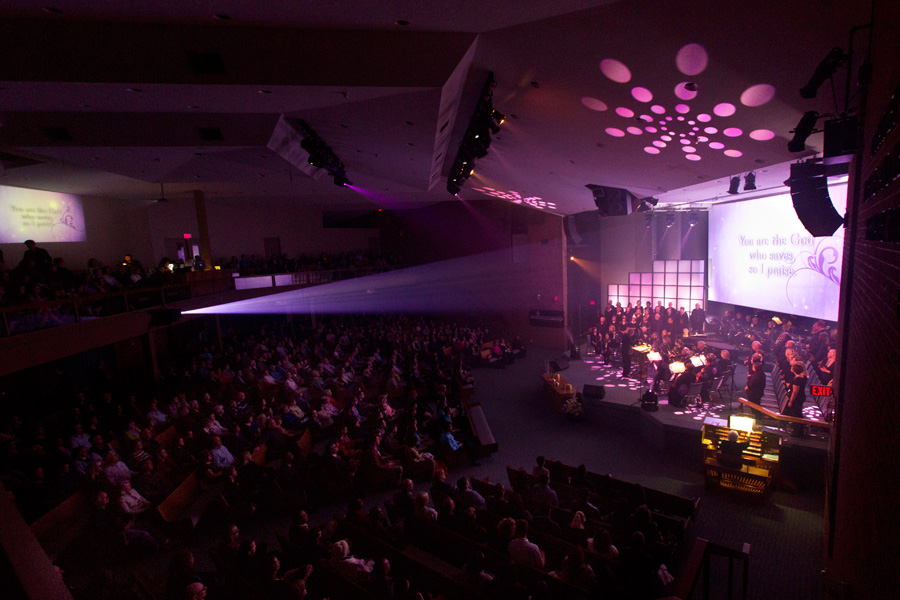
And from the other side of the auditorium.
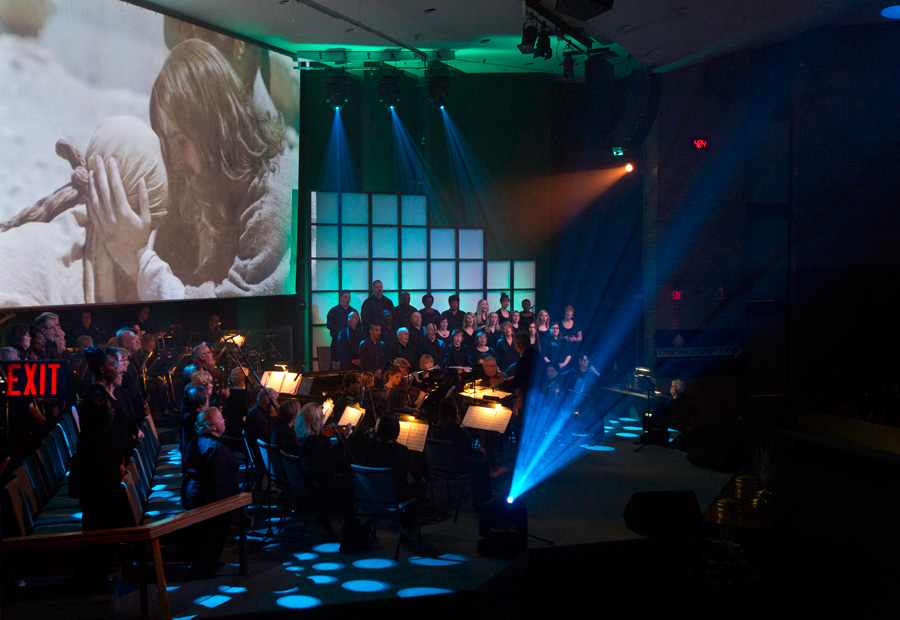
Event lighting changes quickly but the effects are dramatic and powerfully contribute to the effectiveness of the performance. It’s difficult to capture those rapid changes photographically and retain the ‘feel’ of things. These next two images are from a similar vantage point with the same spot lights visible in both. In the first, the primary spots are yellow (1/160 sec f/4).
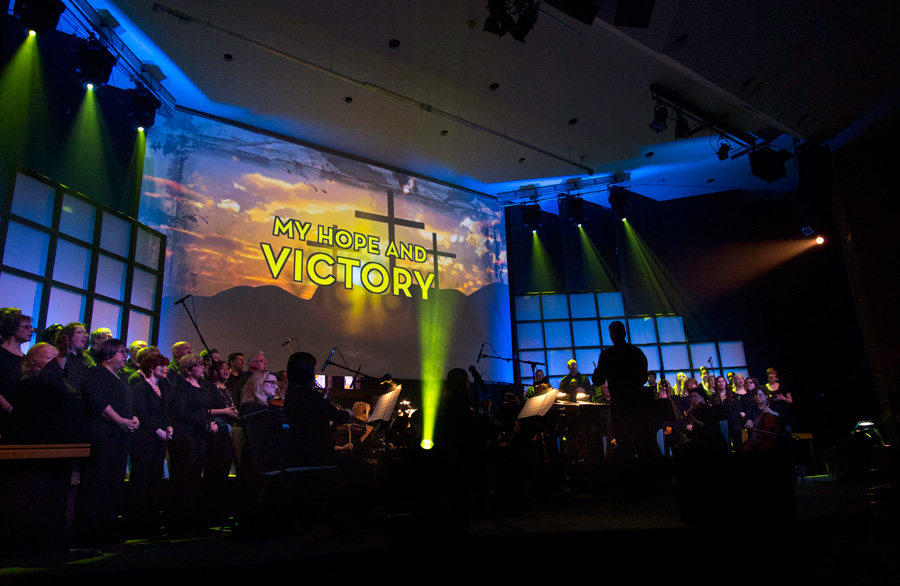
In this shot the spots are white and I’ve over exposed it a bit to highlight the beams of lights diffusing in the smoke. (1/125 sec f/4).
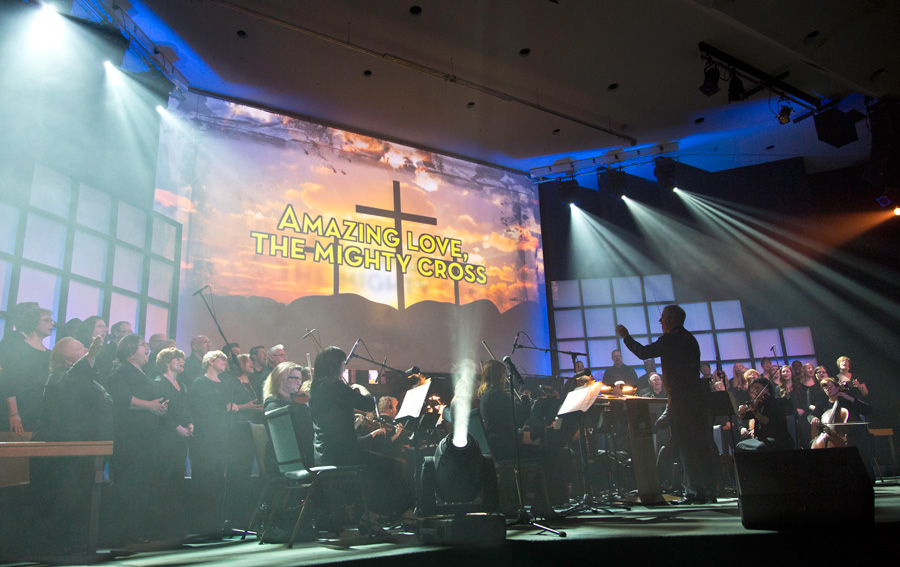
Photographing soloists is perhaps the most challenging as they are virtually always in a bright spotlight against a much darker back ground. This creates big problems for the camera metering system which ‘sees’ the primarily dark scene and tends to ignore the small real-estate occupied by the brightly lit person in the frame. The result is an overexposed person with blown highlights and a result that is destined for the round file. To correct this problem you need to underexpose the meter reading by two to four stops depending on the situation. All of the soloists shown here were underexposed three stops with the exception of the first which was four (the less area in the frame occupied by the light, the greater the compensation required to preserve the highlights). The pleasant result of underexposing to preserve highlights is the creation of even darker back grounds which makes for an uncluttered dramatic image.
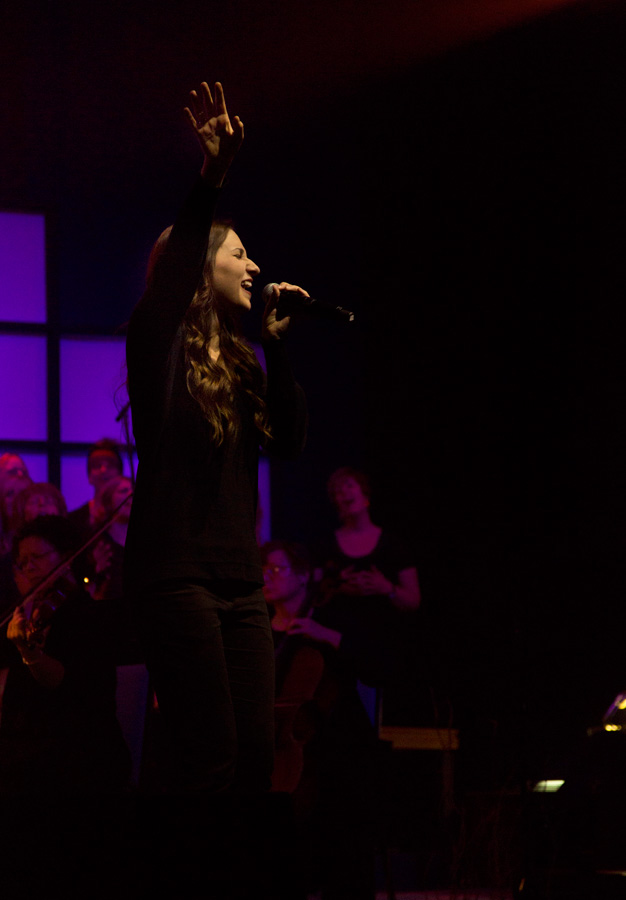
.
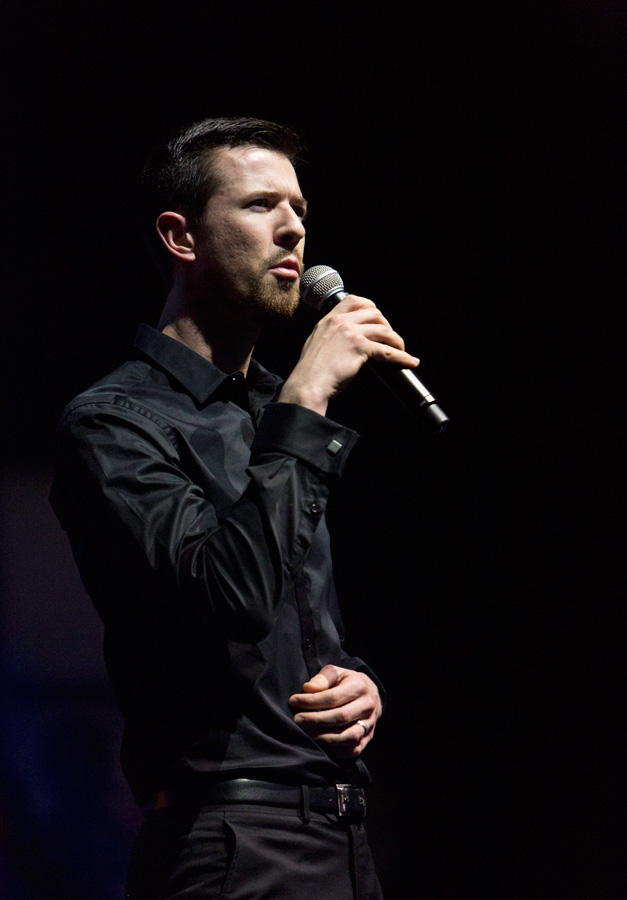
.
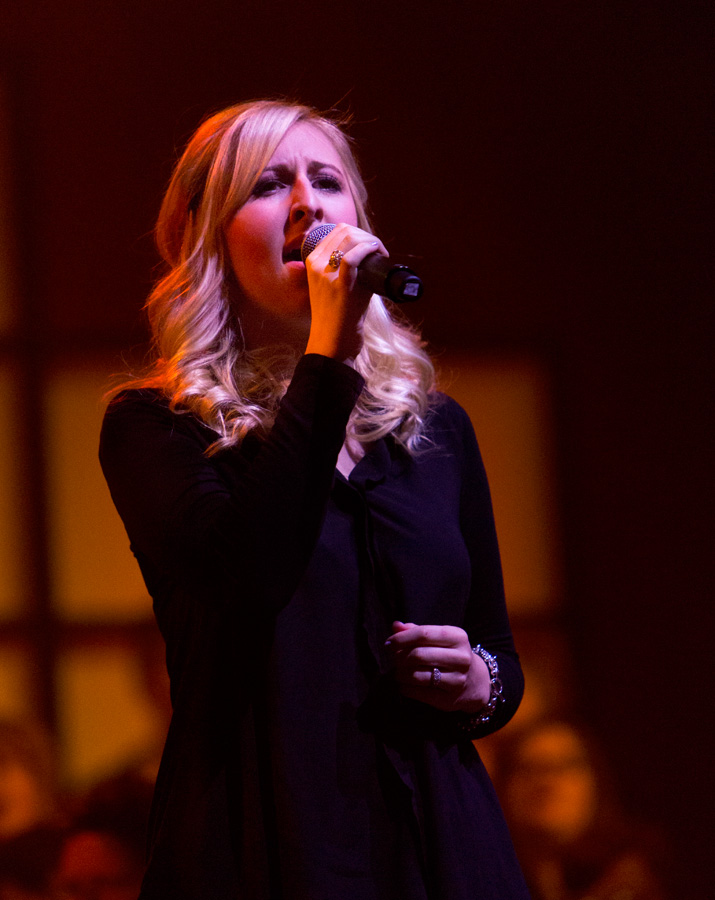
Always be ready to take a good exposure very quickly. The red back lighting in this next shot only lasted for a few seconds but provided an interesting dynamic to the image.
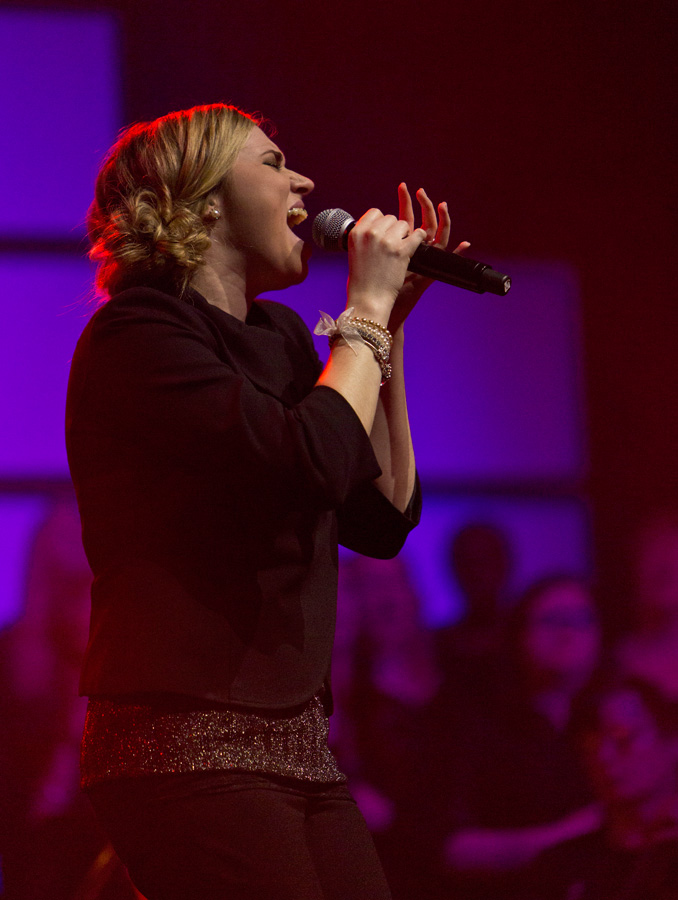
.
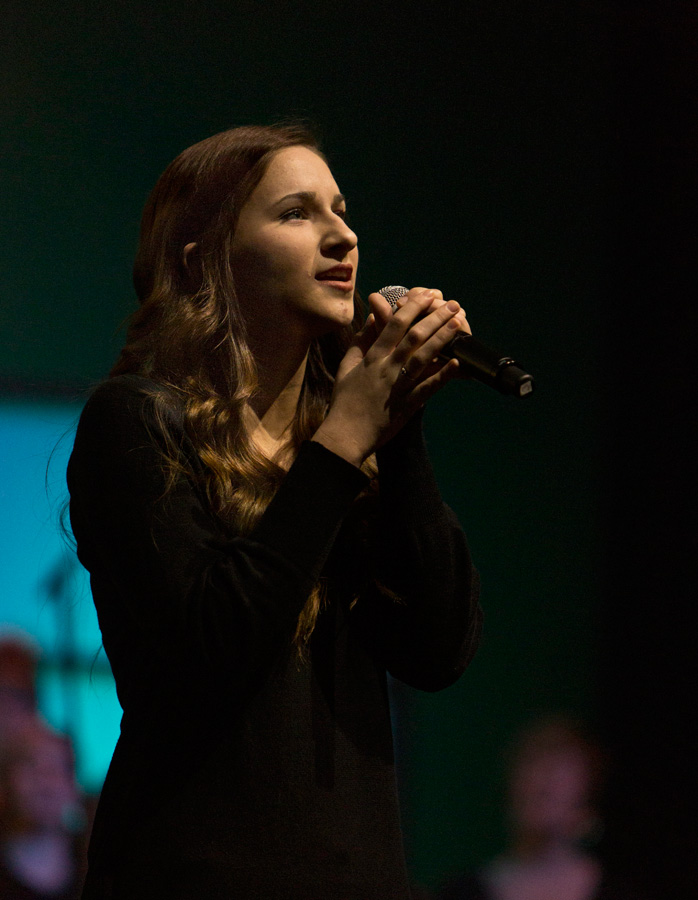
.
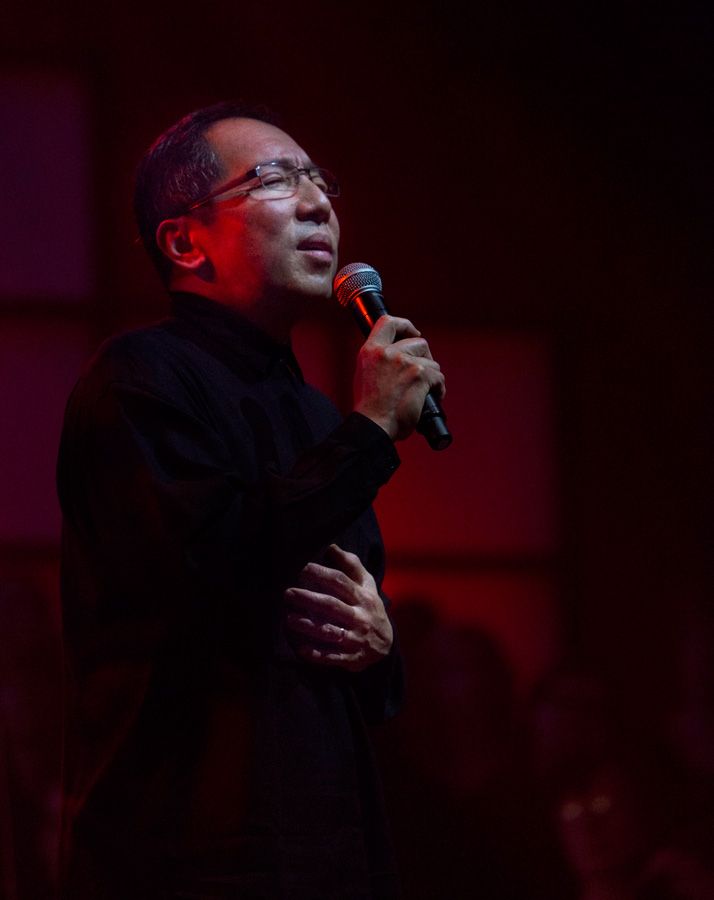
Most serious DSLR users shoot in RAW format (as opposed to JPEG) and for event photography using RAW is essential because of the great latitude it provides in post processing. RAW files are like digital negatives and contain all the data captured by the sensor at the time of the exposure, which although creating large files, allows for manipulation of that data in post processing, including exposure and white balance. When you shoot in JPEG format, in order to make smaller files, the camera strips out a lot of ‘non-essential’ data before writing the image to the memory card in the camera. Obviously the data removed is not available for modification in post processing and unfortunately exposure and white balance are two of the many things removed when you shoot JPEG’s. The variable and dynamic lighting conditions inherent with event photography demands you take advantage of the insurance provided by shooting in RAW.
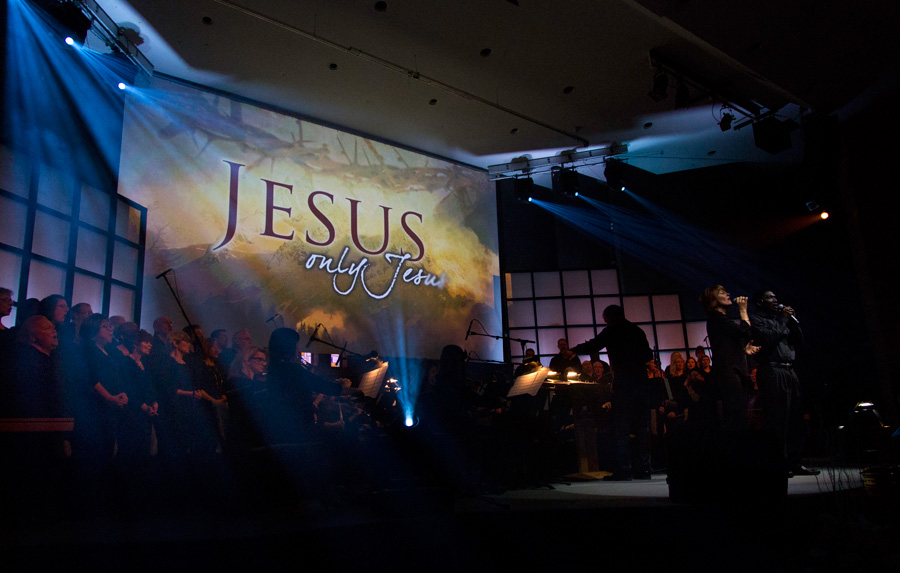
The rest of the images from the Easter presentation can be seen by clicking this link to the CBC – Easter 2014 gallery.
I trust you have enjoyed a wonderful Easter weekend and thanks for taking the time to go through this post. As always, your questions and comments are much appreciated.


A superb gallery of images Scott, one that should be very enjoyable for members of your congregation to view and remember this event. Personally speaking, event photography frightens me!
Thanks Arni and its not as frightening as it seems….just shoot to the left and take lots of pics 🙂
Great coverage of a wonderful event Scott. You realy did a great job of capturing the moments and great to see a Church really focused on the Death and Resurrction of our Lord and Saviour.
Thanks Rob and we are blessed to be part a church that never compromises on the message but is always seeking to proclaim it in vibrant and relevant ways as you can see from these pics.